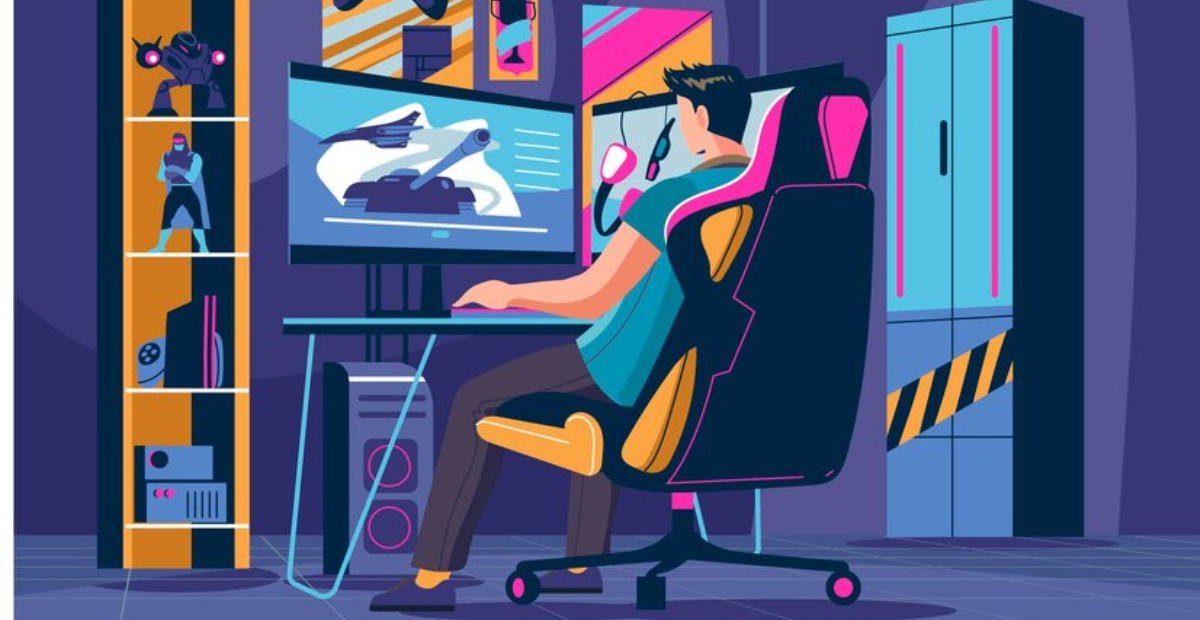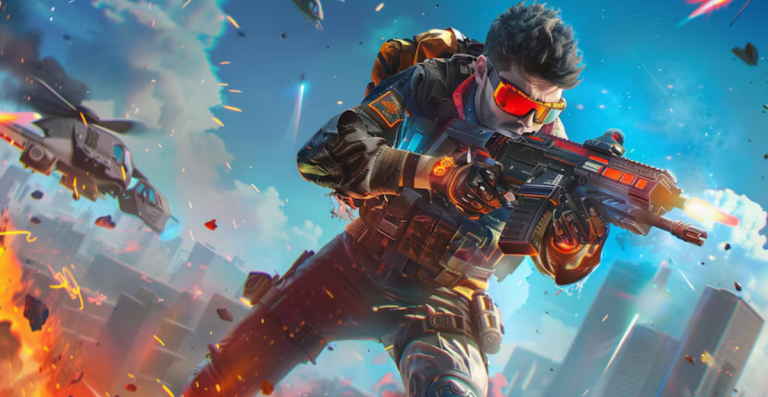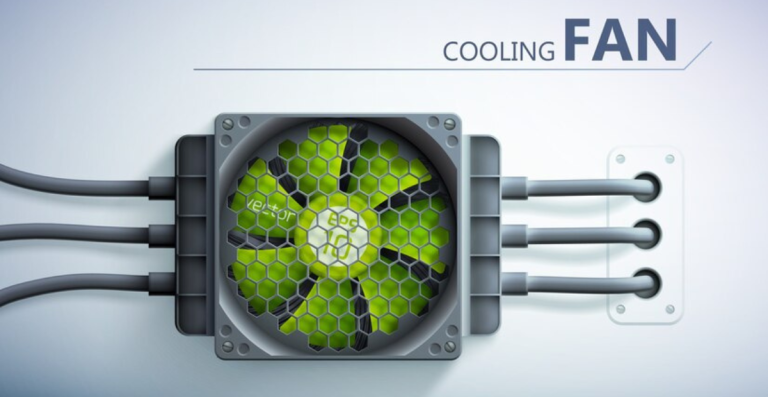The Impact of PCIe Generations on Gaming Performance

The parts that drive game technology change along with it. The PCIe (Peripheral Component Interconnect Express) interface is one such crucial element that is fundamental to the efficiency of your system’s communication with graphics cards, SSDs, and other necessary devices.
Every new PCIe generation brings enhanced performance and quicker speeds, therefore, gamers must comprehend how these changes affect their gaming setups. PCIe generations directly impact responsiveness and overall experience, from loading times to frame rates.
Brief Description of PCIe
A Brief Overview of PCIe PCIe is the digital highway that connects your motherboard to your GPU, SSD, and other components. With each successive PCIe version, your system may unlock greater speeds, allowing it to handle high-performance jobs like gaming.
PCIe 3.0: Provides up to 8 GT/s (gigatransfers per second) of bandwidth per lane.
With 8 GT/s per lane, PCIe 3.0 represented a significant improvement over previous iterations. This bandwidth supported robust performance in mid-to-high-end gaming setups and was more than sufficient for the majority of graphics cards and SSDs at the time.
This number doubles to 16 GT/s with PCIe 4.0.
PCIe 4.0 has twice the available bandwidth of its predecessor, with 16 GT/s per lane. It allowed GPUs to handle more data-heavy surroundings and bigger graphics without experiencing any slowdowns, and it offered faster SSDs some breathing room.
PCIe 5.0: Further doubles it to 32 GT/s.
With 32 GT/s per lane, PCIe 5.0 keeps on the trend of doubling. With very little delay or load on the system, it makes ultra-fast NVMe SSDs possible and supports data-intensive applications like streaming, real-time graphics, and 4K gaming.
Expected PCIe 6.0 speed of 64 GT/s
PCIe 6.0 is designed to meet the high-speed demands of the future and is anticipated to reach 64 GT/s. Designed to enable next-generation GPUs, ultra-fast SSDs, and enormous open-world game assets with smoother transitions, it has double the bandwidth of PCIe 5.0.
Recognizing PCIe’s essential function as a fast interface for vital components
The main connection between important hardware components, such as your graphics card, SSDs, and capture devices, is PCIe. Its goal is straightforward: transfer data quickly and effectively so that your system can react to your actions promptly.
The physical characteristics of PCIe slots and variables affecting compatibility
The slot sizes available on motherboards include x1, x4, x8, and x16. Using a higher-generation card in a lower-generation slot restricts performance to the maximum bandwidth of that slot, even though PCIe versions are backward and forward compatible.
The Impact of PCIe 5.0 on Gaming Performance
PCIe 5.0 is revolutionary for contemporary gaming PCs. It offers a competitive edge in demanding gaming scenarios because of its quadrupled bandwidth over PCIe 4.0, which also significantly improves storage speeds, graphics rendering, and overall system responsiveness.
PCIe 4.0 SSDs have a maximum speed of 7 GB/s.
With PCIe 4.0, NVMe SSDs might now achieve speeds of up to 7 GB/s, opening up new possibilities. These speeds significantly reduced load times, but PCIe 5.0 goes one step further by providing even quicker data flow for more fluid gaming.
The Maximum Theoretical Speed for PCIe 5.0 SSDs is 14 GB/s.
SSDs can achieve up to 14 GB/s with PCIe 5.0, which speeds up heavy in-game data transfers and speeds up loading times for large game files. This results in a considerably smoother experience, particularly in open-world games.
More and more game developers are creating games with increased data throughput and quicker storage options.
Developers are progressively tailoring their games to benefit from speedier storage options as PCIe 5.0 becomes more and more widespread. As more games take use of PCIe 5.0, anticipate faster texture streaming, faster asset loading, and less delays in sequences with a lot of data.
Future Graphics Cards will Fully Utilize this Standard’s Capabilities.
Future GPUs are being developed to take full use of PCIe 5.0’s bandwidth. This implies that they can interact with your system more effectively, allowing for quicker rendering, better visuals, and more responsive gameplay particularly in games that need a lot of graphics.
Examining how PCIe 5.0 affects high-speed NVMe SSD performance in gaming in the real world
In practical terms, PCIe 5.0 improves gaming performance by significantly lowering in-game latency and loading times. It guarantees reduced stuttering and more fluid gaming by giving players quicker access to game objects.
Current PCIe 5.0 compliant gaming component availability and adoption rates
High-end gaming setups are quickly adopting PCIe 5.0, even though it is still relatively new. Many of the newest motherboards, SSDs, and GPUs are compatible with PCIe 5.0, which makes it easier for gamers who want to prepare their systems for the future.
Latency Considerations
Particularly in fast-paced games where responsiveness is essential, latency has a significant impact on gaming performance. Higher bandwidth is available with PCIe 5.0, but preserving low latency is as crucial for responsive gaming.
PCIe 5.0 has minimal latency that is consistent with earlier versions.
In order to prevent the additional bandwidth from impairing system responsiveness, PCIe 5.0 preserves the low latency observed in previous versions. This implies that the data transfer mechanism stays rapid and effective even at greater rates, which is essential for real-time gaming situations.
During gaming, speed increases do not impair responsiveness.
Enhanced latency is not a consequence of PCIe 5.0’s speed enhancements. Actually, even in the most taxing gaming situations, the UI makes sure that the gameplay is fluid and free of noticeable latency.
An explanation of latency about PCIe data transport and how it affects gaming
Simply said, latency is the amount of time that passes between a request and the data itself. Low latency guarantees instantaneous processing of inputs in games, improving responsiveness and immersion. Even quicker data transfer won’t interfere with this crucial component of gameplay thanks to PCIe 5.0’s low latency.
The way that other system latencies and PCIe latency interact to impact the overall gaming experience
The CPU, GPU, and RAM are some of the other system components that contribute to total system latency, even if PCIe 5.0 manages data flow quickly. For the smoothest possible gaming experience, a balanced system makes sure that no one part becomes a bottleneck.
The Transition to PCIe 6.0
The need for quicker, more effective data transport is growing along with the gaming and IT industries. With previously unheard-of speeds and innovative technology, PCIe 6.0 represents a significant advancement that has the potential to transform gaming performance.
Switch from NRZ to PAM-4 Signaling: PCIe 6.0 uses Pulse Amplitude Modulation (PAM-4) signaling, which significantly increases data transfer efficiency by enabling it to send four values each clock cycle as opposed to two.
Enhanced Data Transfer Speed: With a bandwidth of 64 GT/s, PCIe 6.0 doubles that of PCIe 5.0, allowing for quicker and more dependable data transfer between components.
Technological Advancements: PCIe 6.0 offers great speed and reliability for even the most demanding applications thanks to advancements in semiconductor, error correction, and signal integrity technologies.
Future Performance and Gaming: PCIe 6.0 is intended to support applications and games that need more data throughput in the future.
The anticipated timeline for the incorporation of PCIe 6.0 into gaming hardware for consumers
Although PCIe 6.0 is still in its early phases of development, its expected incorporation into consumer gear indicates that it will be accessible within the next several years. To take full advantage of the performance enhancements offered by this new standard, gaming PCs, motherboards, and GPUs must implement it. For gamers looking for the best performance, PCIe 6.0 will be a necessary upgrade as more developers create games with better data throughput in mind.
Implications for Gaming Performance
For gamers who want speed and stability, PCIe 6.0 opens up new options. It creates the groundwork for more engaging, fluid gaming sessions with more bandwidth and more intelligent data management, particularly as games get bigger and more sophisticated.
- Quicker load times decrease the amount of time players must wait between scenes and stages
- Texture-heavy games stream visual data more effectively
- They are perfect for managing a large, open-world area
- They enable quick asset fetching during intensive gameplay
- Prepared for ultra-fast storage devices and next-generation GPUs
- Examining how more PCIe bandwidth affects texture streaming and game loading times
When gaming, every second counts. PCIe 6.0 speeds up data transfer from storage to the GPU, reducing latency. Especially in games with dynamic landscapes or high-resolution textures, this speedup results in cleaner, smoother visuals, faster load times, and fewer hitches in real-time rendering.
Overall Impact of the PCIe Standard on System Performance
The development of PCIe not only improves gaming performance but also increases system efficiency, enabling users to enjoy quicker data transmission and more seamless multitasking. The way devices connect with the CPU has been improved with PCIe 5.0 and PCIe 6.0, enabling systems to operate at peak efficiency without experiencing performance constraints.
Management of Multiple Devices
The way that PCIe 5.0 and 6.0 manage several devices is among their most notable enhancements. By supporting intricate configurations with several GPUs, NVMe SSDs, and other peripherals, these new standards help avoid bottlenecks that could otherwise impair system performance.
Stop Bottlenecks from Forming
Components can operate at maximum capacity without interfering with one another because to the additional bandwidth in these more recent PCIe versions. Even in high-demand scenarios like gaming or content production, the system can analyze input from several devices at once and remain efficient.
Improved Support at the Periphery
PCIe’s increased bandwidth is essential for peripherals like high-speed network cards, streaming capture cards, and other gaming accessories. These devices are better supported by PCIe 5.0 and PCIe 6.0, which provide seamless operation without lowering the performance of other components.
High-Speed Network Cards and Streaming Capture Cards
For these peripherals to operate at their best, quick data transfer is necessary. Higher transfer rates and improved compatibility for PCIe 5.0 and 6.0 cards result in improved streaming quality, quicker upload speeds, and reduced latency, whether gaming or broadcasting live.
Analyzing the Effects of PCIe Bandwidth on the Performance of Several Connected Devices in a Gaming Rig
For intricate gaming setups, PCIe 5.0 and 6.0’s simultaneous device management capabilities are revolutionary. A more responsive and fluid gaming experience is now possible with several NVMe SSDs, GPUs, and other devices operating without affecting overall performance.
Emphasizing PCIe’s Contribution to the Development of Advanced Gaming-Related Features in Contemporary Motherboards and Chipsets
Gamers may benefit from cutting-edge features, including improved support for the newest GPUs, quicker storage, and more reliable peripheral connections, thanks to modern motherboards featuring PCIe 5.0 or PCIe 6.0. These features improve the system’s overall performance as well as the gaming experience.
Real-World Gaming Performance Considerations
Although the theoretical advancements of PCIe generations may seem remarkable, how these changes affect performance in the actual world is more important. Let’s examine how PCIe developments affect gaming in real-world situations.
Present-day GPU Restrictions
Even while GPUs are made to support massive graphics loads, their ability to interact with other components may still be limited. Older PCIe versions, such as PCIe 3.0, limit bandwidth, which prevents current GPUs from reaching their full performance potential.
Newer standards like PCIe 4.0 and PCIe 5.0, on the other hand, assist in releasing greater power by lowering any potential limitations that may otherwise impede GPU performance.
Gains on the Margin
In terms of gaming performance, PCIe 4.0 and PCIe 5.0 can provide slight improvements in frame rates and resolution. These enhancements may not always be apparent in regular gameplay, but they can have a big impact on resource-intensive games or high-end gaming setups. PCIe 4.0 currently offers most gamers a great experience, but PCIe 5.0 becomes more crucial for cutting-edge gaming technology and future-proofing.
Enhancements Shown in Frame Rates
PCIe 5.0 can result in smoother performance in graphically demanding games, even if frame rate increases might not always be revolutionary. Increased bandwidth lessens the likelihood of bottlenecking and enables the GPU to operate at peak efficiency, which improves overall visual quality and minimizes frame dips when playing games.
A Small Improvement in Performance Under Normal Gaming Workloads
Gamers may only see modest performance gains under normal game workloads. But when playing multiplayer games with high-resolution graphics or operating large-scale open-world games, which need rapid, high-volume data transfers, these little improvements become more apparent. PCIe 5.0 and 6.0 can guarantee more effective handling of these situations.
Quantifying the Performance Differences via the Analysis of Benchmark Data and Real-World Game Tests Between Generations of PCIe
Benchmark testing has demonstrated that moving from PCIe 3.0 to PCIe 4.0 and then to PCIe 5.0 results in performance improvements. By evaluating frame rates, load times, and responsiveness in a variety of games, these benchmarks offer an unbiased comparison of PCIe generations. Specifically, PCIe 5.0 performs better on high-speed operations like asset streaming and texture loading.
Giving Advice on How to Make Knowledgeable Choices Regarding PCIe Compatibility When Constructing or Improving a Gaming Computer
It’s crucial to take PCIe compatibility into account when designing or updating a gaming PC. Even while PCIe 4.0 is already a powerful performer for the majority of gamers, those who want to construct state-of-the-art setups or future-proof their systems should think about PCIe 5.0 or even PCIe 6.0 for optimal performance in demanding applications and emerging gaming technologies.
Considerations for Real-World Gaming Performance
The improvements in PCIe are important for real-world gaming performance, but real-world game settings are the true test. For those who want to optimize their system, knowing how PCIe enhancements result in improved gaming, greater frame rates, and lower latency may be revolutionary.
GPU Restrictions in Practical Situations
Even though newer PCIe versions provide higher bandwidth, gamers with older GPUs may not always perceive the performance improvements. This is the reason:
- Current GPUs might not be making the most of PCIe 4.0 or PCIe 5.0’s bandwidth.
- Particularly in less demanding games, the GPU itself frequently acts as the performance bottleneck rather than the PCIe link.
Major Boosts vs. Marginal Gains
The performance improvement may be slight in certain situations but significant in others. The games, hardware, and tasks you’re doing determine how much of an improvement you get:
- PCIe 4.0 or 5.0 can offer a discernible improvement in frame rates, load times, and texture streaming for AAA titles and demanding workloads.
- With just modest gains in frame rates or game responsiveness, the performance difference may be negligible for less demanding titles.
- It’s crucial to determine if PCIe improvements will actually improve your gaming setup or whether you’ll only see a performance boost over earlier versions.
Enhancement of the Overall Gameplay Experience and Frame Rates
In some gaming settings, higher PCIe versions such as PCIe 4.0 and 5.0 can significantly affect performance. PCIe provides noticeable enhancements for gamers that demand high resolutions, ray tracing, and extreme settings:
- With a suitable GPU, it is possible to unlock greater frame rates at higher resolutions or with ray tracing enabled.
- NVMe SSDs’ faster data transfer speeds up loading times and lessen latency and stuttering when playing games.
- This makes the experience more seamless and pleasurable, especially for competitive gamers who value speed above visual accuracy.
Tests of games and benchmark data
It is essential to examine benchmark data and gaming testing in order to completely comprehend how PCIe generations affect performance:
- Gaming test benchmark results demonstrate the useful effects of PCIe improvements on overall responsiveness, frame rates, and game loading times.
- Tests conducted in the real world provide information about how particular games, particularly those that are open-world or graphically demanding, benefit from PCIe improvements.
- Gamers may make better judgments regarding system upgrades and performance optimization by comparing results across various PCIe versions.
Making Knowledgeable Choices Regarding PCIe Compatibility
- It’s crucial to base your selections when constructing or updating a gaming PC on what your setup needs:
- Make sure your motherboard and GPU are PCIe compatible, particularly if you want to future-proof your system.
- Keep track of your gaming preferences and whether your existing gear can take full benefit of PCIe 4.0 or PCIe 5.0.
Your unique demands and financial situation will determine which PCIe version is best for you, allowing you to maximize your gaming experience without wasting money on features that might not add much.
Final Thoughts
PCIe versions 3.0 through 6.0 greatly improve gaming performance through smoother gameplay, lower latency, and quicker data transmission. Even though PCIe 5.0 and 6.0 provide remarkable speeds, suitable gear is necessary to fully utilize their capabilities.
System bottlenecks and GPU power are two more variables that affect the entire gaming experience. PCIe technology will continue to influence gaming as it develops, so players should think about their demands while making upgrades or creating a system that will last.






